 Hawthorne wrote his works used “atmospherical medium as to bring out or mellow the lights and deepen and enrich the shadows of the picture.”
Hawthorne wrote his works used “atmospherical medium as to bring out or mellow the lights and deepen and enrich the shadows of the picture.”
Living in the first two-thirds of the 19th Century, Hawthorne wrote in the midst of the Romantic Era though many called him a “Dark Romantic” whatever that means (perhaps it is part of the confusion around what a “gothic novel” is and, after all, Hawthorne invokes elements of the supernatural in his work). He changed his last name by adding a “W” so as to avoid association with his unrepentant great-grandfather John Hathorne who was a prosecuting judge during the Salem Witch Trials.
His first novel Fanshawe (1828) received little attention but his short stories which were published as Twice-Told Tales (1837) gained local notoriety in New England. He wrote a number of stories and novels until he was reputedly convinced to turn one of his short stories into the The Scarlet Letter (1850), though this claim is reputed by some. While critical review was mixed, and his friend Edwin Percy Whipple described it as “intensely morbid” and that Hawthorne was “too painfully anatomical in his exhibition of them,” the book became a best seller. D.H. Lawrence later described it as the perfect work of American  imagination.
imagination.  In Massachusetts Hawthorne became friends with his neighbor Ralph Waldo Emerson, William Wordsworth (who was still living in England), , and other Concord locals including Henry David Thoreau and Herman Melville. Melville even
In Massachusetts Hawthorne became friends with his neighbor Ralph Waldo Emerson, William Wordsworth (who was still living in England), , and other Concord locals including Henry David Thoreau and Herman Melville. Melville even  dedicated his novel Moby-Dick (1851) to Hawthorne, “In token of
dedicated his novel Moby-Dick (1851) to Hawthorne, “In token of  my admiration for his genius, this book is inscribed to Nathaniel Hawthorne.”
my admiration for his genius, this book is inscribed to Nathaniel Hawthorne.”
Though Hawthorne’s bibliography is immense and rich, I have chosen to write about two of his books: The House of the Seven Gables (1851) and The Scarlet Letter (1850). The former because it is out-and-away my favorite book by Hawthorne and the latter because it is almost everyone else’s favorite (that is, The Scarlet Letter is widely considered to be Hawthorne’s greatest novel).
The House of the Seven Gables (1851) by Nathaniel Hawthorne Ticknor and Fields, Boston
This is the story of a New England family, the Pyncheons,  but more importantly, it is the story of their ancestral home. The gloomy-looking old mansion was built on land that was stolen from the legal owner, Matthew Maule, by lies that discredited Maule so Colonel Pyncheon could seize the land.
but more importantly, it is the story of their ancestral home. The gloomy-looking old mansion was built on land that was stolen from the legal owner, Matthew Maule, by lies that discredited Maule so Colonel Pyncheon could seize the land.  On his deathbed, Maule (who the Colonel had accused of practicing witchcraft) placed a curse on Pyncheon. When the house was built and a house-warming party was held, Colonel Pyncheon was found dead in his living room chair. A portrait of the dead Colonel continued to hang in the main room of the house.
On his deathbed, Maule (who the Colonel had accused of practicing witchcraft) placed a curse on Pyncheon. When the house was built and a house-warming party was held, Colonel Pyncheon was found dead in his living room chair. A portrait of the dead Colonel continued to hang in the main room of the house.  The author suggests it is was a constant reminder of the dark spirit and curse that hung over the house and those who lived in it.
The author suggests it is was a constant reminder of the dark spirit and curse that hung over the house and those who lived in it.
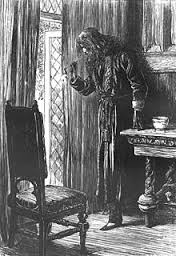 The stately but poor Hepzibah Pyncheon takes over the house and tries to support her brother Clifford who was recently released from prison and is now depressed and considering suicide. While Clifford’s depression deepens, Hepzibah opens a little shop in the house and hires her pretty 17-year-old
The stately but poor Hepzibah Pyncheon takes over the house and tries to support her brother Clifford who was recently released from prison and is now depressed and considering suicide. While Clifford’s depression deepens, Hepzibah opens a little shop in the house and hires her pretty 17-year-old 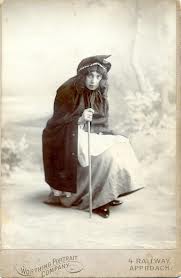 cousin Phoebe, who moves in and takes over the shop and makes it a success. She also cheers Clifford up and brings some measure of happiness to the house. Hepzibah has also rented the attic to Mr. Holgrave, a daguerreotypist who, unbeknownst to anyone, is a decendent of Matthew Maule who was swindled by Colonel Pyncheon out of the land upon which the house was built. Holgrave writes a story about Alice Pyncheon, a beauty whose ghost is believed to haunt the Pyncheon House. Holgrave has fallen in love with Phoebe and reads his story about Alice Pyncheon to her.
cousin Phoebe, who moves in and takes over the shop and makes it a success. She also cheers Clifford up and brings some measure of happiness to the house. Hepzibah has also rented the attic to Mr. Holgrave, a daguerreotypist who, unbeknownst to anyone, is a decendent of Matthew Maule who was swindled by Colonel Pyncheon out of the land upon which the house was built. Holgrave writes a story about Alice Pyncheon, a beauty whose ghost is believed to haunt the Pyncheon House. Holgrave has fallen in love with Phoebe and reads his story about Alice Pyncheon to her.
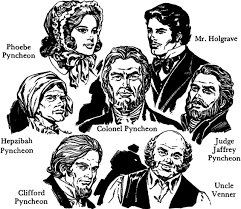 Phoebe leaves to visit her home in the country and Hepzibah and Clifford’s cousin, Judge Pyncheon, shows up and threatens to commit Clifford to an insane asylum unless Clifford gives him a legendary deed to land the family supposedly owns in Maine. Before this matter can be addressed, Judge Pyncheon is found dead in the same chair that Colonel Pyncheon was also found dead. Hepzibah and Clifford are both exonerated, the romances end, and everyone leaves the house to start new lives in the countryside.
Phoebe leaves to visit her home in the country and Hepzibah and Clifford’s cousin, Judge Pyncheon, shows up and threatens to commit Clifford to an insane asylum unless Clifford gives him a legendary deed to land the family supposedly owns in Maine. Before this matter can be addressed, Judge Pyncheon is found dead in the same chair that Colonel Pyncheon was also found dead. Hepzibah and Clifford are both exonerated, the romances end, and everyone leaves the house to start new lives in the countryside.
The Scarlet Letter (1850) by Nathaniel Hawthorne Ticknor, Reed & Fields 1850, Boston
 Set in the middle 17th Century, this book tells the story of Hester Prynne who gives birth out of wedlock and, in the Puritan town of Boston, is publically stigmatized and punished for her crime of adultery. She is forced to wear a scarlet “A” on her dress and stand on the scaffold
Set in the middle 17th Century, this book tells the story of Hester Prynne who gives birth out of wedlock and, in the Puritan town of Boston, is publically stigmatized and punished for her crime of adultery. She is forced to wear a scarlet “A” on her dress and stand on the scaffold  before a crowd of people for three hours to endure their anger and torment as they humiliated her as the penalty for her sin.
before a crowd of people for three hours to endure their anger and torment as they humiliated her as the penalty for her sin.
During Hester’s ordeal, a strange little man begins to loudly insist that the father of the child should also be punished, but 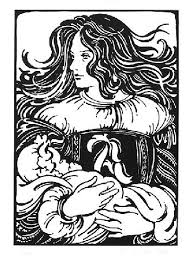 Hester has refused to identify the baby’s father. Hester recognizes the man as her long-lost husband though he has changed his name to Roger Chillingworth and is posing as a physician. He vows to find the man and bring him to face the community’s punishment. The Reverend John Wilson and Arthur Dimmesdale, the pastor of Hester’s church, each question her at some length but Hester continues to refuse to identify her lover. She is taken to jail where she and the baby are to be examined by the “doctor” Roger Chillingworth.
Hester has refused to identify the baby’s father. Hester recognizes the man as her long-lost husband though he has changed his name to Roger Chillingworth and is posing as a physician. He vows to find the man and bring him to face the community’s punishment. The Reverend John Wilson and Arthur Dimmesdale, the pastor of Hester’s church, each question her at some length but Hester continues to refuse to identify her lover. She is taken to jail where she and the baby are to be examined by the “doctor” Roger Chillingworth.  Hester and her former husband have a long, honest discussion but she will not name her lover even though Chillingworth vows to find out and punish the man. Hester seeks console from Reverand Dimmesdale to whom she identifies Chillingworth as her former husband.
Hester and her former husband have a long, honest discussion but she will not name her lover even though Chillingworth vows to find out and punish the man. Hester seeks console from Reverand Dimmesdale to whom she identifies Chillingworth as her former husband.  Eventually Dimmesdale confesses his guilt, plans to leave the country in shame but remains and eventually dies an early death. Hester’s daughter Pearl grows up, the mysteries are solved and they each find resolution and peace in their own individual ways.
Eventually Dimmesdale confesses his guilt, plans to leave the country in shame but remains and eventually dies an early death. Hester’s daughter Pearl grows up, the mysteries are solved and they each find resolution and peace in their own individual ways.
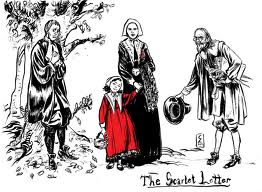 This is an English-language classic and a wonderful novel. It is not my favorite primarily because of its focus on public stigmatization. But it is masterfully written by one of the geniuses of the era and a fascinating story from the mid-Nineteenth Century.
This is an English-language classic and a wonderful novel. It is not my favorite primarily because of its focus on public stigmatization. But it is masterfully written by one of the geniuses of the era and a fascinating story from the mid-Nineteenth Century.
